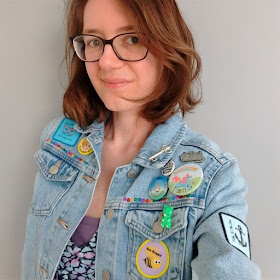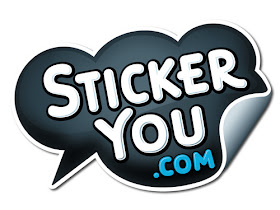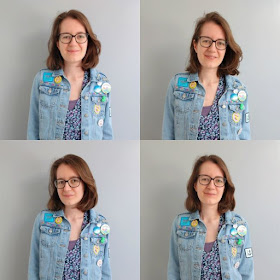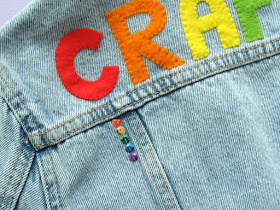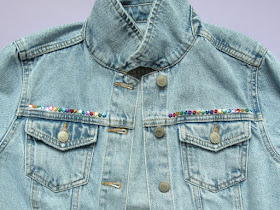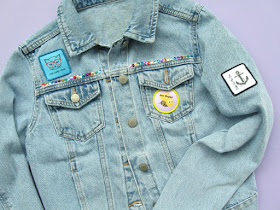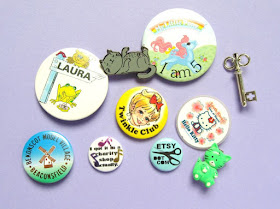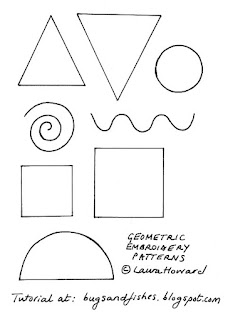(If you've not read Part One click here to catch up!).
2016 was a very busy year for me and (I'm slightly embarrassed to admit this) it took me nine months to get around to shopping for wadding and backing fabric to complete the quilt. When it arrived, though, I was excited to get stuck into the quilting process.
I found some nice red extra-wide fabric which wasn't a perfect match for the deeper red in the quilt top, but still looked good and meant I didn't have to worry about joining fabric together to make the back of the quilt. After washing and ironing the backing fabric, I ironed the quilt top...
... and laid all three layers out on our living room floor, pinning them together with special curved safety pins.
As well as the wadding, backing fabric, and quilting pins, I also bought some special thread designed for hand-quilting and a massive (16 inch / 40 cm) quilting hoop - you use the hoop to help hold the fabric as you stitch. It was, I'll be honest here, a bit annoying having to buy a great big wooden hoop as well as all that other stuff (making a quilt is not cheap!) but all the hand quilting tutorials I read said you needed one and they were right.
I'd decided to do the quilting with red thread, sewing a line either side of each seam. I used masking tape to help mark out a line for me to stitch along, which I found worked really well.
It took a while to get the hang of the hand-quilting, and I'm sure if any "proper" quilters took a look at my stitches they'd be appalled by how messy they are... but I made slow and steady progress. Sitting under the layers of this quilt as I stitched it was super cosy!
It's a little hard to see the quilting lines in photos, but they stand out much more clearly in real life and as well as holding the layers of the quilt together they give it a lovely bit of added detail and texture.
The hand quilting process was relaxing but boy was it time-consuming! I timed myself one afternoon and found it took approximately one and a half hours to sew one of the grid lines across the quilt. With 44 lines to stitch in total, that's at least 66 hours of quilting (and probably a lot more - to say nothing of the time spent on all the other stages!).
In October I hit the halfway point...
... then spent so much of my spare time quilting that I got totally sick of it and had to take a break for a couple of weeks to do other things to stop myself going a bit bananas.
By late November I had just two lines left to stitch. I'd drawn a little diagram of the quilt and marked off each line in red pencil when it was finished so I could easily track my progress. It was very satisfying seeing it slowly fill up with red lines!
At the end of November, the quilting was finally finished! I took a late night victory selfie and (foolishly) predicted that I'd have it finished by Christmas.
The quilt was looking soooo gooood...
I asked my Facebook and Instagram followers what colour they thought I should use for the binding (there was a pretty decisive vote for red!), started looking up binding tutorials... and then got no further.
December that year was incredibly hectic. I packed everything I owned up into boxes, moved across the country and into a new flat, then almost immediately began lots of DIY projects. I might have possibly been able to find the time to do the final bit of stitching for the quilt, but I definitely didn't have the space in my brain for planning fabric purchases and getting my head round the binding instructions.
So, the quilt went in a box and it stayed there... until last month! A mere 17 months after I finished the hand-quilting! I know this is not the longest time anyone has neglected a work-in-progress (heck, I myself have another quilt which has been "in progress" since I was a teenager) but FOUR Christmases have now passed since I started making my Christmas quilt. Full of enthusiasm for Finally Finishing Things after finishing my mini squares blanket - I was DETERMINED to get this quilt finished.
Over the course of a few April evenings, I trimmed away the excess fabric and wadding, cut the binding fabric into strips and sewed them together, ironed them, then began sewing them to the quilt.
I totally misunderstood the instructions for how to do the corners (oops) but managed to get them looking okay in the end (though not remotely how they were actually supposed to look).
Adding the binding wasn't exactly a quick process but after all the hours of stitching that have gone into this quilt (and all the months in between) it seemed to go by in a flash.
Now I know this is a bit of a tease as I don't have final photos to show you yet, but it is amazing how much impact adding the binding had on the overall look of the quilt. It actually looks like a quilt now instead of just a bunch of fabric sewn together. I know technically all a quilt is is a bunch of fabric sewn together but I'm sure you get what I mean - it looks complete now, it's delightful.
I did a very happy dance when it was finished and I cannot wait to show you guys photos of how it turned out!
































